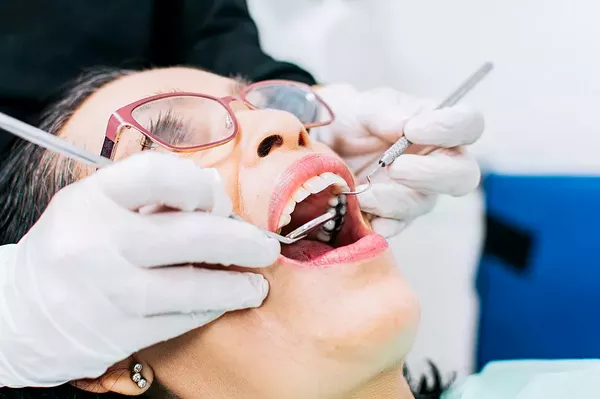Dental fillings are a common dental procedure used to treat cavities and restore the integrity of a tooth. However, the cost of a filling can vary significantly depending on various factors, including the type of filling material used, the size and location of the cavity, local market rates, and the dentist’s experience. In this comprehensive guide, we’ll explore the different types of fillings, cost factors, average costs, insurance coverage, additional treatments, payment options, choosing a dentist, and the importance of preventive care.
Types of Fillings
Fillings can be made from various materials, each with its own advantages and cost implications:
- Amalgam Fillings: Amalgam fillings, also known as silver fillings, are made from a mixture of metals including silver, tin, copper, and mercury. They are durable and less expensive compared to other types of fillings. However, their silver color makes them more noticeable, which may be a concern for some patients.
- Composite Fillings: Composite fillings are made from a mixture of plastic and fine glass particles. They can be closely matched to the color of the natural tooth, making them a popular choice for visible teeth. Composite fillings are more expensive than amalgam fillings but offer better aesthetics.
- Gold Fillings: Gold fillings, also known as inlays or onlays, are made from gold alloy. They are highly durable and resistant to wear, making them suitable for large cavities in back teeth. Gold fillings are the most expensive option due to the cost of the material and the additional laboratory work required.
- Porcelain Fillings: Porcelain fillings, also called inlays or onlays, are made from tooth-colored porcelain material. They offer excellent aesthetics and durability, making them a preferred choice for visible teeth. However, porcelain fillings are the most expensive option and require multiple dental visits for placement.
The choice of filling material depends on factors such as the location of the cavity, aesthetic preferences, durability, and budget.
Cost Factors
Several factors can influence the cost of a filling:
- Size of the Cavity: Larger cavities require more filling material and may be more expensive to treat.
- Location of the Tooth: Cavities in molars and premolars may be more complex to treat and therefore more costly.
- Local Market Rates: Dental fees vary by region, with urban areas often having higher costs than rural areas.
- Dentist’s Experience: Experienced dentists may charge higher fees for their expertise and skill in performing fillings.
Patients should discuss these factors with their dentist to understand how they may impact the overall cost of treatment.
Average Costs
The cost of fillings can vary widely depending on the type of material used and the geographic location. Here is a general range of costs based on current market rates:
- Amalgam Fillings: $50 – $150 per filling
- Composite Fillings: $100 – $400 per filling
- Gold Fillings: $250 – $4,000 per filling
- Porcelain Fillings: $250 – $4,000 per filling
These costs may vary based on individual factors such as the size of the cavity and the complexity of the treatment.
Insurance Coverage
Dental insurance may cover a portion of the cost of fillings, but coverage varies depending on the insurance plan. Most plans cover amalgam fillings at a higher percentage than composite or porcelain fillings due to their lower cost. Patients should review their insurance policy or consult with their insurance provider to understand their coverage and any out-of-pocket expenses.
Additional Treatments
In some cases, additional treatments may be necessary alongside a filling, such as:
- Root Canal: If the cavity has reached the pulp of the tooth, a root canal may be required to remove infected tissue and seal the tooth.
- Crown: A crown may be placed over a heavily filled tooth to provide additional support and protection. Crowns can significantly increase the overall cost of treatment.
Patients should discuss any additional treatments with their dentist and inquire about the associated costs.
Payment Options
Dental care can be costly, but there are options available to help manage expenses:
- Payment Plans: Many dental offices offer payment plans that allow patients to spread out the cost of treatment over time.
- Credit Options: Patients can use credit cards or medical credit lines to cover dental expenses.
- Dental Discount Programs: Some dental discount programs offer reduced fees for dental procedures for members.
Patients should inquire about payment options with their dentist’s office to find a solution that fits their budget.
Choosing a Dentist
Selecting the right dentist is essential for receiving quality care at a fair price. Consider the following factors when choosing a dentist:
- Qualifications: Verify that the dentist is licensed and has received adequate training in performing fillings and other dental procedures.
- Reviews: Read online reviews and ask for recommendations from friends or family to find a reputable dentist with a track record of satisfied patients.
- Pricing Transparency: Choose a dentist who provides transparent pricing and is willing to discuss treatment costs and payment options upfront.
Preventive Care
Preventive care is key to avoiding cavities and the need for fillings. Patients can take the following steps to maintain good oral health:
- Regular Dental Check-ups: Visit the dentist for regular check-ups and cleanings to detect cavities early.
- Brushing and Flossing: Brush teeth twice a day and floss daily to remove plaque and prevent decay.
- Healthy Diet: Limit sugary foods and drinks, which can contribute to tooth decay.
- Fluoride Treatment: Consider fluoride treatments to strengthen tooth enamel and prevent cavities.
By prioritizing preventive care, patients can reduce the likelihood of needing fillings in the future, saving both time and money.
Conclusion
The cost of a filling can vary depending on factors such as the type of filling material, size and location of the cavity, local market rates, and the dentist’s experience. Patients should discuss these factors with their dentist and explore payment options to manage expenses effectively. By prioritizing preventive care and choosing a reputable dentist, patients can maintain good oral health and minimize the need for fillings in the long run.
FAQs About Dental Fillings
1. How much does a filling cost in Hong Kong?
The cost of a dental filling in Hong Kong can vary depending on various factors such as the type of filling material, the size and location of the cavity, and the dentist’s experience. On average, white fillings (composite fillings) can range from HK$800 to HK$1800 per filling, while silver fillings (amalgam fillings) may cost slightly less. However, these prices are approximate and may vary from one dental clinic to another.
2. Why is tooth filling so expensive?
Several factors contribute to the cost of tooth fillings, including the quality of the materials used, the complexity of the procedure, and the overhead costs of running a dental practice. Higher-quality filling materials, such as composite or porcelain, tend to be more expensive than traditional amalgam fillings. Additionally, the skill and experience of the dentist can also influence the cost of the procedure. Dentists invest significant time and resources into their education and training to provide patients with safe and effective dental care, which can contribute to the overall cost of the treatment.
3. What is the best price for dental filling?
The “best” price for a dental filling depends on several factors, including the type of filling material, the size and location of the cavity, and the quality of the dental care provided. While it may be tempting to seek out the lowest price for a filling, it’s essential to consider the long-term durability and effectiveness of the treatment. Cheaper fillings may use lower-quality materials or be performed by less experienced dentists, which can compromise the success of the procedure and potentially lead to additional dental problems in the future. Patients should prioritize finding a reputable dentist who offers fair and transparent pricing for quality dental care.
4. Are tooth fillings worth it?
Yes, tooth fillings are generally considered worth it as they help to restore the structure and function of a tooth that has been damaged by decay. Without fillings, cavities can continue to grow, leading to further tooth decay, pain, and eventual tooth loss. Fillings can also prevent the need for more invasive and costly dental procedures, such as root canals or extractions, in the future. While the cost of fillings may seem high upfront, they are a necessary investment in maintaining oral health and preventing more significant dental problems down the line. It’s essential to prioritize preventive dental care, including regular check-ups and cleanings, to catch cavities early and minimize the need for fillings.
































